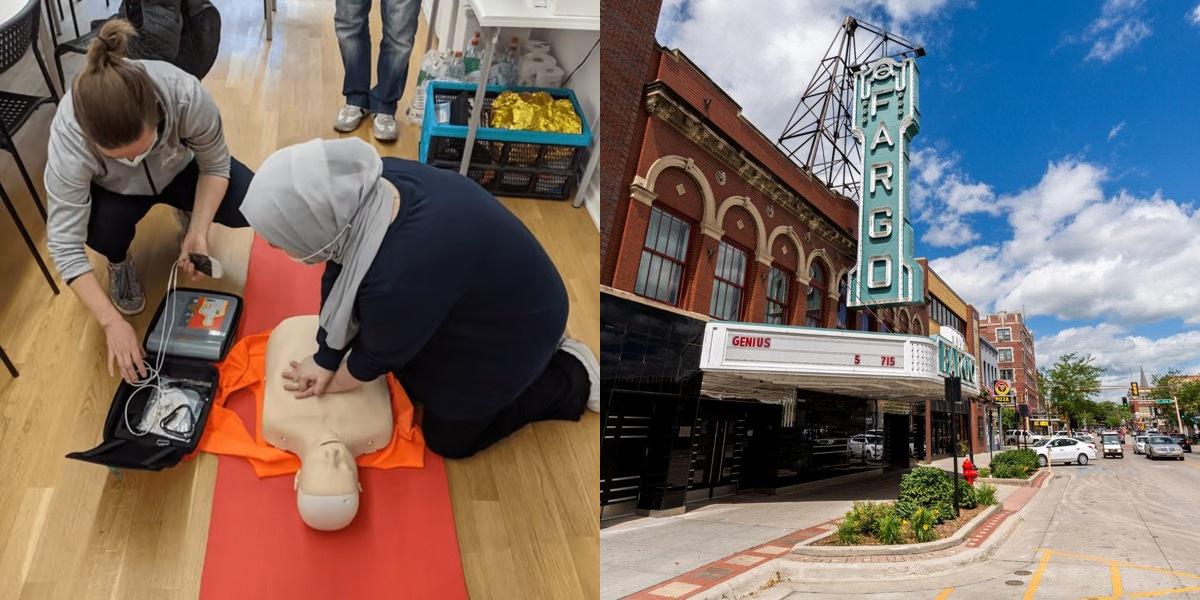What is a Paramedic?
A paramedic is a highly trained medical professional who provides emergency medical care to individuals in need. They are often the first responders in emergency situations and are responsible for assessing patients, administering treatments, and transporting patients to medical facilities.
Where does a Paramedic work?
Paramedics can work in various settings, including ambulances, fire departments, hospitals, and other healthcare facilities. They may also be employed by private companies that provide medical transportation services.
How to Become a Paramedic in North Dakota?
To become a Paramedic in North Dakota, individuals must first complete an accredited Paramedic education program, which typically takes 1-2 years. Next, they must obtain National Registry of Emergency Medical Technicians (NREMT) certification and a state-issued Paramedic license. With these credentials, they can then search for and secure Paramedic positions, earning a competitive salary commensurate with their skills and experience.
What are the requirements to become a Paramedic in North Dakota?
To become a paramedic in North Dakota, individuals must meet certain education and legal requirements. These requirements may include:
- Completion of a state-approved paramedic training program
- Obtaining certification as an Emergency Medical Technician (EMT)
- Passing the National Registry of Emergency Medical Technicians (NREMT) exam
- Meeting specific physical and mental health standards
- Possessing a valid driver's license
How do I get my Paramedic certification?
If you are interested in becoming a paramedic, you will need to complete a certification program. The requirements and process for obtaining paramedic certification can vary slightly depending on the state you live in, but generally, the steps involved are as follows:
1. Start with the right education: Begin by enrolling in an accredited paramedic training program, typically offered by community colleges, technical schools, or universities. These programs usually last between 1 to 2 years and include both classroom learning and hands-on clinical experience.
2. Meet the prerequisites: Before entering a paramedic training program, ensure you meet prerequisites such as having a high school diploma or GED, being at least 18 years old, and holding a valid driver's license. Some programs may also require coursework in subjects like anatomy, biology, and math.
3. Dive into comprehensive training: Once accepted, your training will cover a wide range of topics essential for paramedic work, including emergency medical procedures, patient assessment, pharmacology, and trauma management. This training is crucial and prepares you for real-life emergency situations through internships and ambulance ride-alongs.
4. Prepare for the NREMT exam: After completing your paramedic training, you'll be eligible to take the National Registry of Emergency Medical Technicians (NREMT) certification exam. This exam assesses your knowledge and skills across various aspects of paramedic practice, ensuring you're fully prepared for the field.
5. Obtain state licensure: In addition to passing the NREMT exam, most states require paramedics to obtain state licensure to practice. This process typically involves submitting an application, providing proof of NREMT certification, and possibly passing a state-specific exam or completing additional training requirements.
6. Commit to ongoing education: To maintain your certification and stay updated with advances in paramedic care, you'll need to participate in continuing education. This involves completing a certain number of hours of continuing education every few years and engaging in professional development activities.
How do I get a job as a Paramedic?
Once you have obtained your paramedic certification, you will be eligible to apply for paramedic job positions. Here are some steps you can take to increase your chances of getting a job as a paramedic:
1. Research the job market: Begin by exploring paramedic job openings in your area through online job boards, hospital websites, and ambulance service portals. Pay attention to the qualifications and skills required for these roles to understand what employers are seeking.
2. Update your resume: Highlight your paramedic certification, education, and relevant experiences such as clinical training and internships. Include any additional certifications like ACLS or PALS that enhance your qualifications for the job.
3. Write a tailored cover letter: Craft a cover letter that introduces yourself briefly, expresses your interest in the position, and emphasizes how your skills and experiences align with the job requirements. Customize each cover letter to match the specifics of each job application.
4. Network effectively: Utilize your connections within the paramedic community, including instructors, classmates, and professionals you know. Attend industry events and conferences to expand your network and discover potential job opportunities.
5. Apply strategically: Submit your resume and cover letter following the application instructions provided by each employer. Ensure you meet all requirements, including references and background checks if required.
6. Prepare for interviews: Research the organization thoroughly to understand its values and mission. Practice answering common interview questions related to your paramedic experience, skills, and ability to handle stressful situations. Dress professionally and bring necessary documents to the interview.
7. Stay persistent and positive: Job hunting can take time, so maintain a positive attitude and keep applying. Consider gaining additional experience through volunteer work or part-time roles while pursuing full-time paramedic positions. Persistence and networking often lead to success in landing a job as a paramedic.
Career Paths and Opportunities after Becoming a Paramedic
Becoming a paramedic opens up a variety of career paths and opportunities within the field of emergency medical services (EMS). Here are a few options to consider:
-
Field Paramedic: Many paramedics work in the field, responding to emergency calls and providing immediate care to patients. Field paramedics work on ambulances and often collaborate with other first responders, such as firefighters and police officers. This role can be physically demanding and requires quick thinking and problem-solving skills.
-
Flight Paramedic: Some paramedics choose to specialize in aeromedical transport and become flight paramedics. Flight paramedics work on helicopters or fixed-wing aircraft and provide critical care to patients during air transport. This role requires additional training and certification, as well as the ability to work in high-stress and high-altitude environments.
-
Hospital Paramedic: Paramedics can also work in hospitals, providing care in emergency departments, intensive care units, and other specialized areas. Hospital paramedics often work closely with doctors and nurses to provide advanced life support and assist with various medical procedures.
-
Dispatch and Communications: Paramedics with strong communication skills and a desire to help others can pursue careers in EMS dispatch or communications. In these roles, paramedics coordinate emergency responses, provide medical advice over the phone, and ensure that the appropriate resources are dispatched to the scene of an emergency.
-
Teaching and Education: Experienced paramedics can also transition into teaching and education roles. They can become instructors at paramedic training programs, EMS academies, or colleges and universities. Teaching allows paramedics to share their knowledge and experiences with future generations of EMS professionals.
-
Management and Administration: Paramedics who are interested in leadership and management can pursue careers in EMS administration. They can work as supervisors, managers, or directors within EMS agencies, hospitals, or government organizations. In these roles, paramedics help oversee operations, develop protocols and policies, and ensure that high-quality care is provided to patients.
-
Specialized Areas: Paramedics can also choose to specialize in certain areas of emergency medicine, such as pediatric care, cardiac care, or trauma care. Specialized paramedics often undergo additional training and certification to develop expertise in these areas. They may work as part of specialized response teams or in hospitals with specific patient populations.
Frequently Asked Questions






